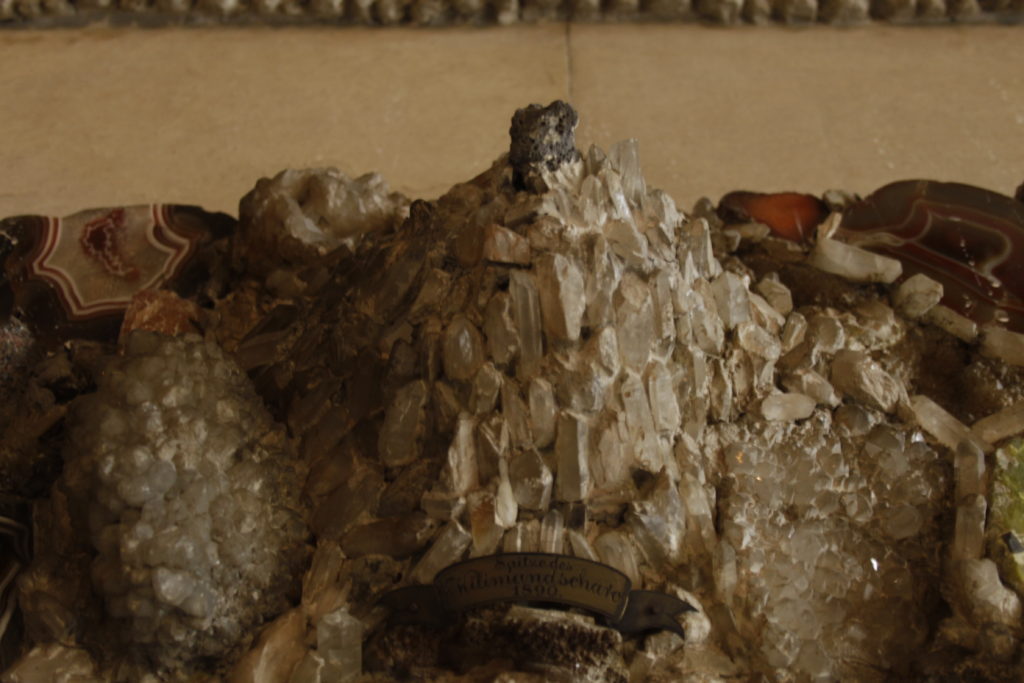"Nonsense" in history lessons
Mnyaka Sururu Mboro on how a German “discovered” mountain Kilimanjaro
Mnyaka Sururu Mboro was born in 1951 and lives in Berlin. He is a Tanzanian activist, co-founder of the NGO Berlin Postkolonial. He has been actively campaigning for the acknowledgment of German colonialism in the public sphere since the 1980s. He leads guided tours through the so-called “African Quarter” in Berlin and is board member of the NGO Decolonize Berlin. In this short piece, he tells us about his experience with colonial perspectives on history and gives us his recommendation for the future of the installation with the alleged “peak of Kilimanjaro” in the New Palace in Potsdam.
I come from Tanzania, and more precisely from the slopes of mountain Kilimanjaro. When I think about this piece of rock in Potsdam in the New Palace, it brings back quite a lot of memories.
I spent my childhood under British colonial rule and one day, during the history lesson, my teacher Mr Michael asked us:
“Hey children, you know our mountain, the one we can see from here?”
“Yes of course we know it!”
“But do you know who discovered it?”
“Discovered it? No, we don’t know.“








“Listen very carefully and don’t forget that: mount Kilimanjaro was discovered by a German known as Mr Rebmann in 1848. You get it?”
“Yes sir!”
That day, I do remember very well, I was pleased to learn such a new thing. When I came back home, I went straight to my grandmother, as I usually did. I was proud I could tell her:
“Grandma, today we learnt something very knew!”
She asked me: “What then?”
“Do you know who discovered mountain Kilimanjaro?”
“What?”, she exclaimed. “What are you trying to tell me?”
“My teacher Mr Michael told us that it’s Mr Rebmann who discovered mountain Kilimanjaro in 1848.”
“Shut up!”, she shouted. “Tomorrow in the morning we are going to see your teacher and he has to tell me what nonsense he teaches you.”
During the night I couldn’t sleep because I was… I wouldn’t say afraid, but it is shameful for me to have my grandmother escort me to the school and having her confronting the teacher with what he taught us. But, I didn’t have any way out.
We arrived at school early in the morning. We used to gather in the yard in rows like the military. Our school band would play the same song every morning and we had to sing along. It went: “Salaam valme King George / Salaam valme King George…” which means “Greet King George”, the king of Britain back then.
So after this ritual, my grandma went straight to Mr Michael and asked him:
“What did you teach my boy yesterday?”
“Sorry, Grandma Tawaia what are you talking about? I taught a lot of things.”
“What about mountain Kilimanjaro?”
“I don’t remember well…”
“Didn’t you tell them that Mr Rebmann discovered mountain Kilimanjaro in 1848?”
“Oh yes! That’s true. They have to know this.”
My grandmother could not hold it any more. She raised her walking stick and started beating Mr Michael. He started running away and she followed him. All the children were so pleased! They were laughing and shouting: “Yes, Bibi, beat him again!”
Me, I was not pleased. I was ashamed of my grandmother. But today, as I’m telling you this story, I think that I would be ready to give him some extra strucks…

As I do understand, there is a piece of volcano rock from mountain Kilimanjaro on a wall in the New Palace which was supposedly brought by Hans Meyer. For me, I would say that this stone can remain there as it is, but not alone. There has to be some information about German colonialism in Kilimanjaro area and in the whole of Tanzania. This history has to be shown, especially how brutal colonialism was. How many people – especially Wachaga from the Kilimanjaro region – were killed by the colonialists. Some of them were hanged, even their chiefs, and their heads were chopped off and brought to Germany for racial research.
This history is not visible in the New Palace. Yet, it has to be there. We, Chaga people and other Tanzanians, have asked for these human remains to be sent back. Besides, a lot of cultural objects were also looted and they also need to be returned. The stone can remain on the wall, but the historical context needs to be there and colonial history should be told in a critical way.

Excellent story. I shall republish it one day.
Kwame Opoku.